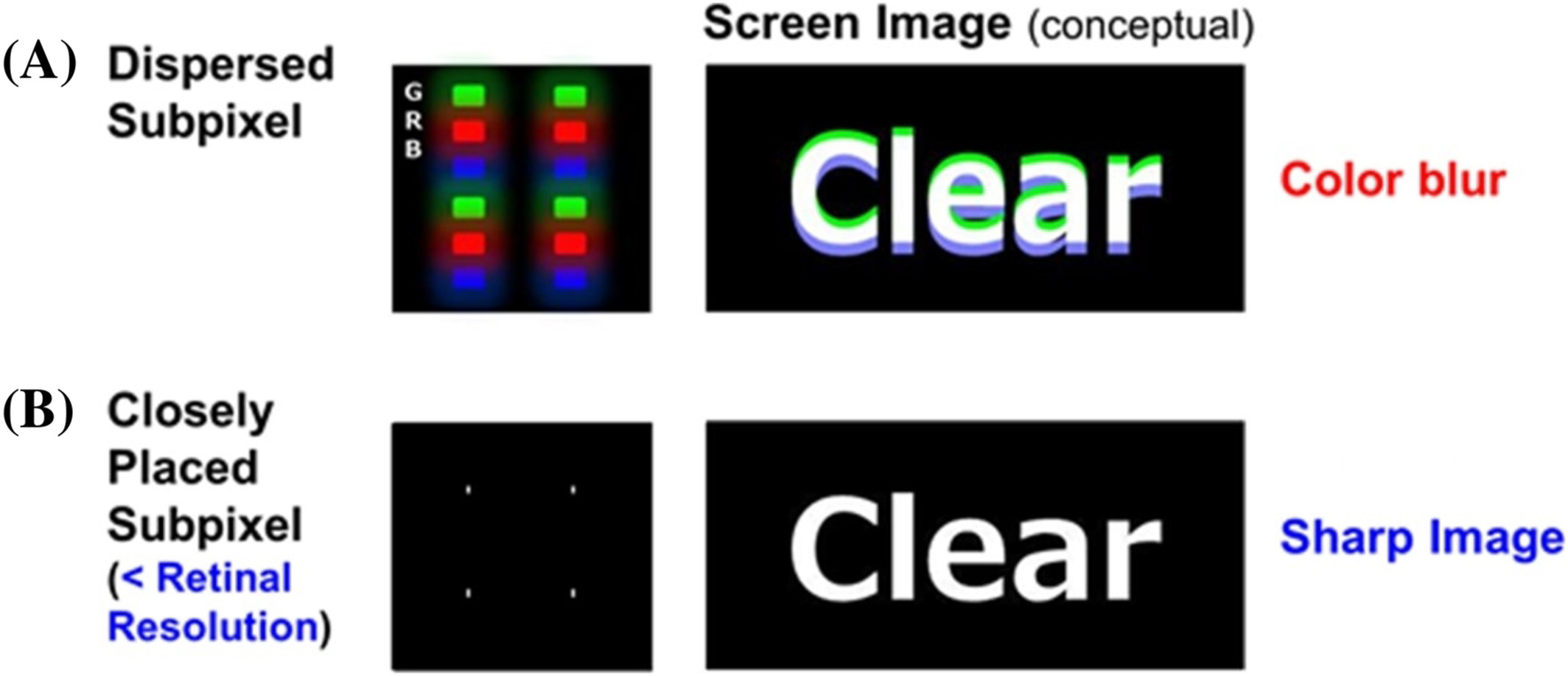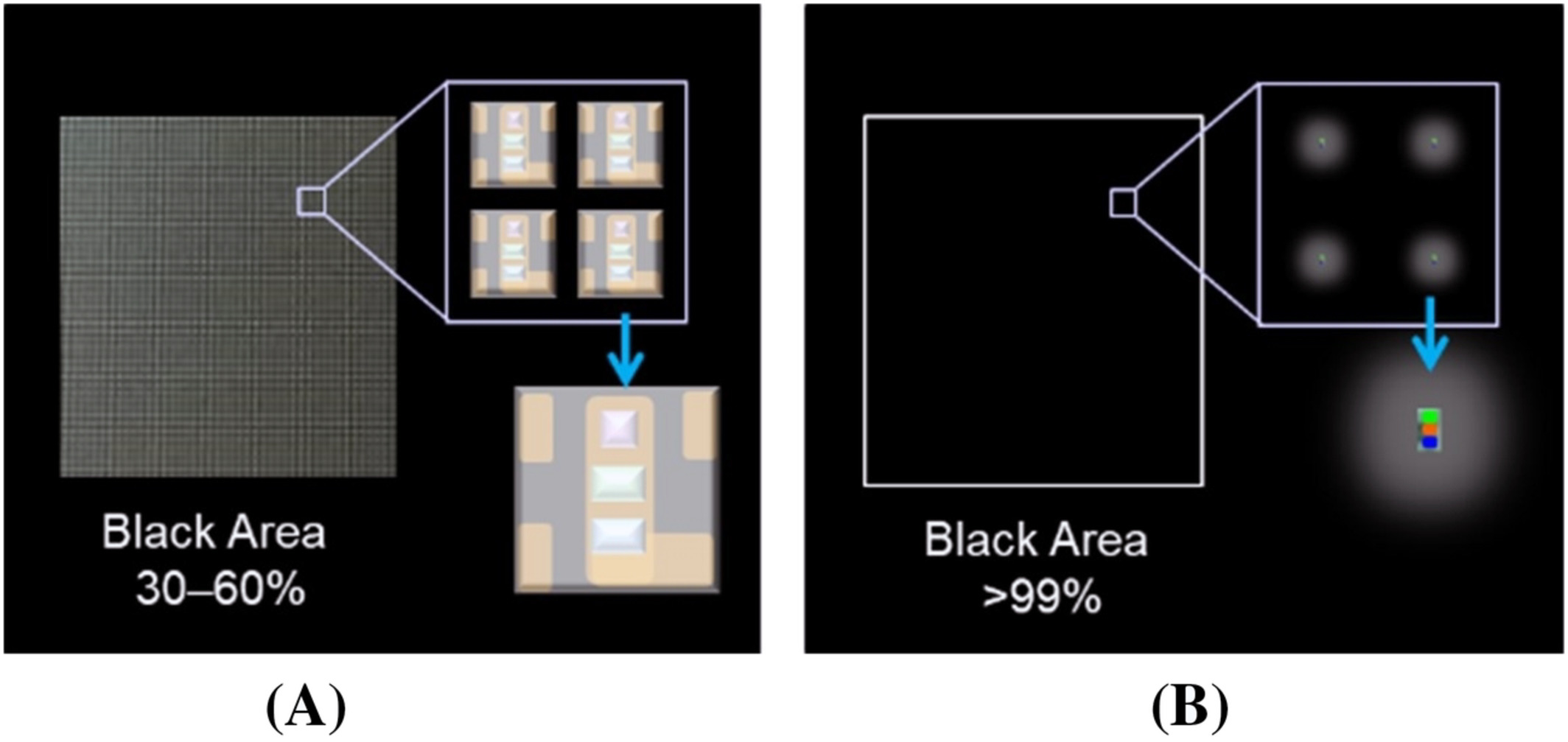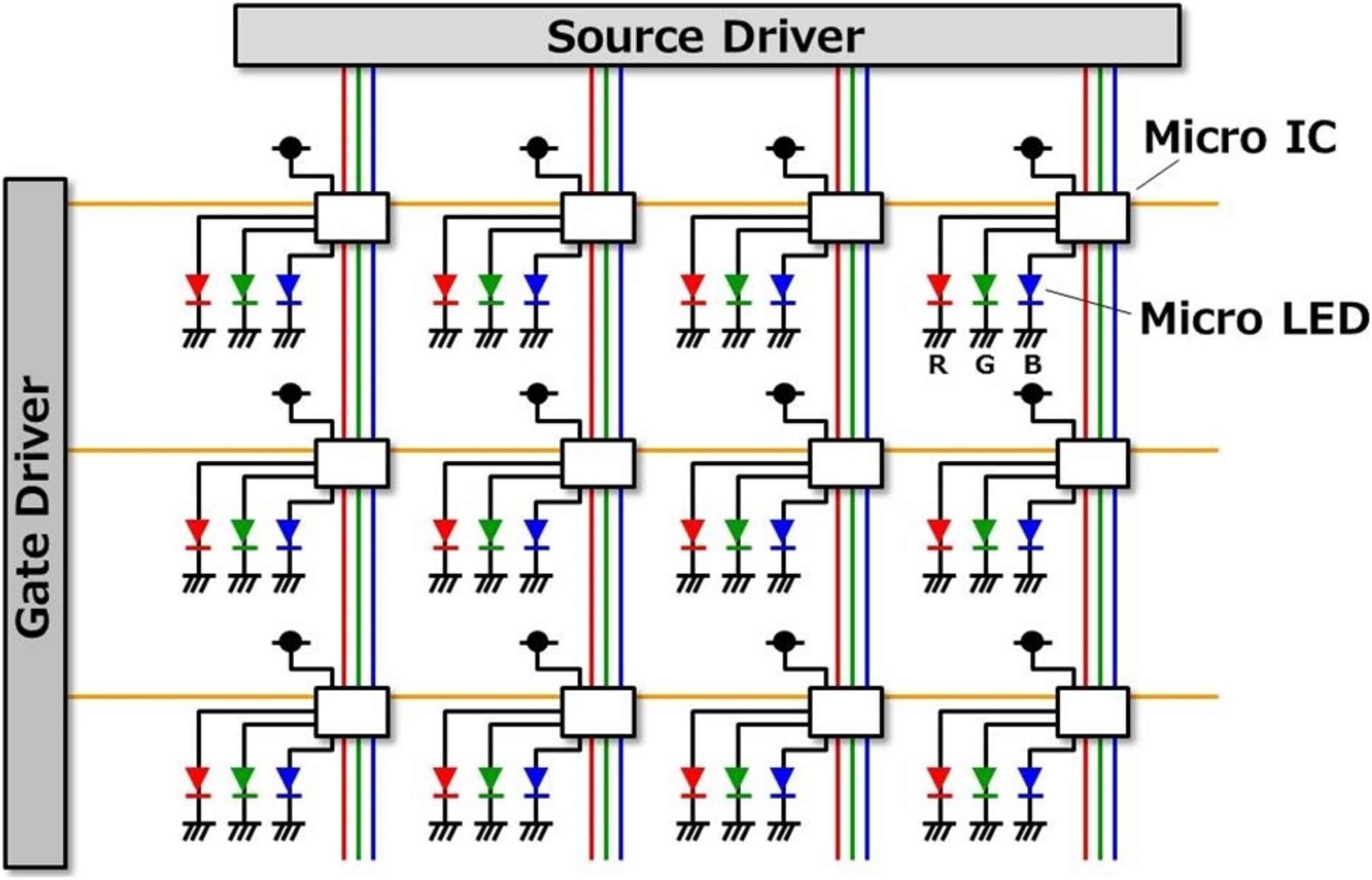Now Sony has released a lot of information and detail about the latest version of the display in the Journal of the SID
The key point of the system for the visual impact was the depth of the black of the display, which was achieved by using a genuine microLED that allowed nearly the whole of the pixel area to be black. The microLEDs are approximately 20 ?m and Sony said that a key point was to to get the RGB subpixels very close together – specifically within 80??m. When the subpixels are not so closely pack together, the eye sees distinct colour lines – very similar to the ‘chromatic abberation/fringing’ that can be seen in lower quality camera lenses. Eliminating that issue gets closer to an image that is ‘indistinguishable from the real object’.
Colour fringing is one factor that can break the realism of the display and another is a difference in brightness and colour performance when the display is viewed off-axis. It’s a particular issue if the viewer is close to the display and they may well be when it’s as big as the Sony display. To solve that problem, Sony ensured that the emissions from the LED are basically Lambertian and without an off-axis colour shift.
To achieve the deep blacks, the surface of the LED is just 0.003 mm². In a pixel that is 1.2mm pitch, like the Crystal LED, the area that is not LED is over 99%, while a typical ‘SMD’ LED display has a black area of 30%-60%, typically. Sony measured the scattering effect of traditional LEDs and found that the scattering reflectivity of the non-black areas was as high as 80 times the level of the black areas and that really affects the contrast ratio when the display is in normal ambient lighting. Sony reached its design by using the data it collected to calculate the amount of black needed to give 10,000:1 contrast in ambient light of 100 lux and with the display having a peak brightness of 1000 cd/m².
As I have written many times, driving LEDs is very far from a trivial issue. Most big LEDs use passive matrix driving. The time that the pixel can be lit in a passive system is very limited to avoid flicker, but that means that when the pixel is lit, it has to be very bright, relying on the persistence of the eye to make a stable image. The high currents mean issues with different impedance for different track lengths from the driver to the pixel as well as crosstalk. To avoid those problems, Sony integrated a micro IC with an integrated driver behind each pixel. That keeps the drive current much lower and the circuit can keep the current constant, which keeps luminance and colour performance constant and much better than traditional LEDs. The active matrix scheme means that the whole display can be illuminated simultaneously, eliminating rolling artefacts and enabling up to 120Hz operation with black frame insertion to avoid image hold artefacts.
The mechanics of LEDs are also challenging and it’s easy to damage SMD LEDs. To eliminate this, Sony encapsulates all the LEDs with special resins that resist deterioration despite the high level of photons in a small area.
Sony did tests to understand the accuracy of the seams between pixels needed to give a truly seamless image avoiding dark and light lines. Having really small LEDs within the pixel means much more ability to trim the pixels to achieve a seamless look. That’s essential in a tiled display that is assembled from modules that are assembled into groups that are then combined to a full display. The firm also calculated the distortion from the self weight of the modules when stacked and from thermal expansion.
Sony said that the green and blue LEDs in the display were co-developed with Nichia Corp. It didn’t specify the source of the red ones.
There are more details in the journal article, but what is clear from the paper is that while the marketing message of this kind of exceptional display may be a simple one – “the display is great because of the percentage of black”, the reality is that to deliver such fantastic performance as the Sony display needs a lot of really good engineering. (BR)
The paper is:





